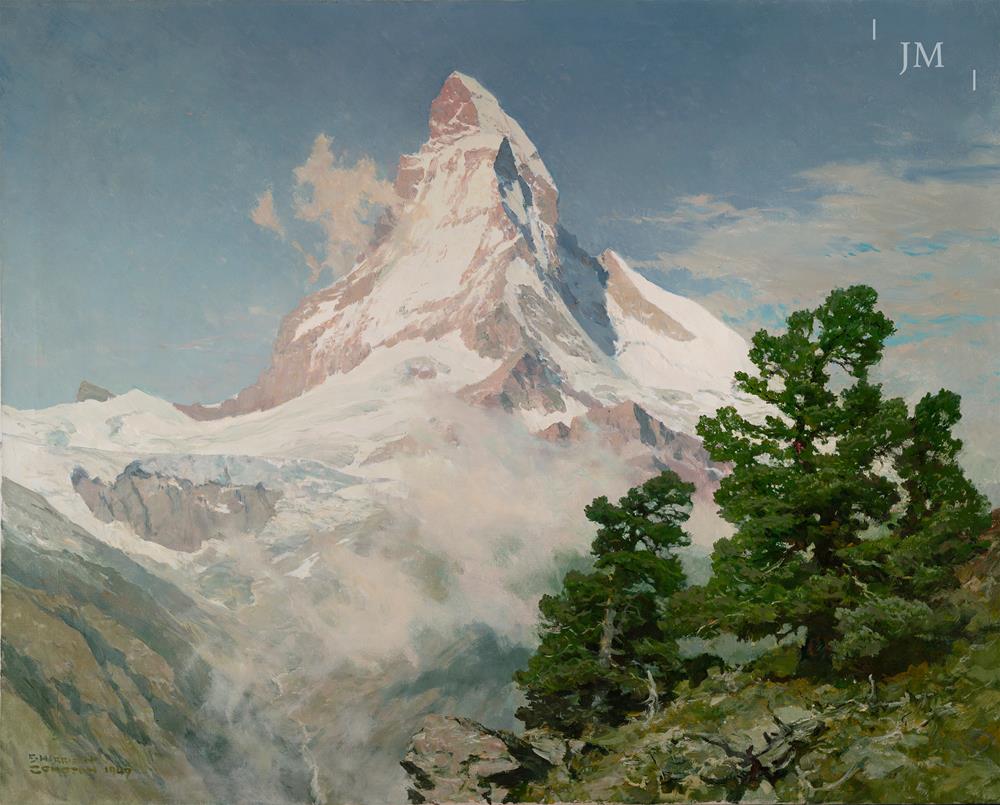Edward Harrison Compton ( 1881 - 1960 )
The Matterhorn from Riffelberg, Zermatt, Switzerland

The Matterhorn from Riffelberg, Zermatt, Switzerland
oil on canvas 31½ x 39¼in (80 x 100cm) signed and dated 1949 Peaks & Glaciers 2019, p. 13
item sold
The walk or train ride from Zermatt to Riffelberg offers the finest and most iconic views of the Matterhorn’s ‘Hörnli’ ridge. In the seventy years since Compton produced this summery ‘portrait’of the Alps most famous emblem, the wide snow field straddling the base of the Matterhorn’s south-east face has all but disappeared just as the glacier on the Zmutt Ridge to the north has shrunk considerably since the 1980s. Curiously, the peak’s four sides face the four cardinal directions: north, east, south and west and it is undeniably a remarkable mountain, composed of gneiss rock. Geologically speaking it is classed as a‘cirque’. Despite Zermatt’s relative remoteness, Whymper’s conquest of the Matterhorn in 1865 became a cause celèbre. It abruptly concluded one era in mountain-climbing, making way for a more recreational approach rather than one of perpetual conquest. The accident didn’t kill off climbing but the mountain’s notoriety would turn Zermatt into another mecca for British tourists - as Mont Blanc had done for Chamonix; by 1880 the Matterhorn had been climbed 159 times: 132 ascents were made from the Swiss side and 27 from Italy. In 1960 the Matterhorn’s silhouette, seen from this angle, was adopted by the Swiss chocolate maker, Toblerone.

